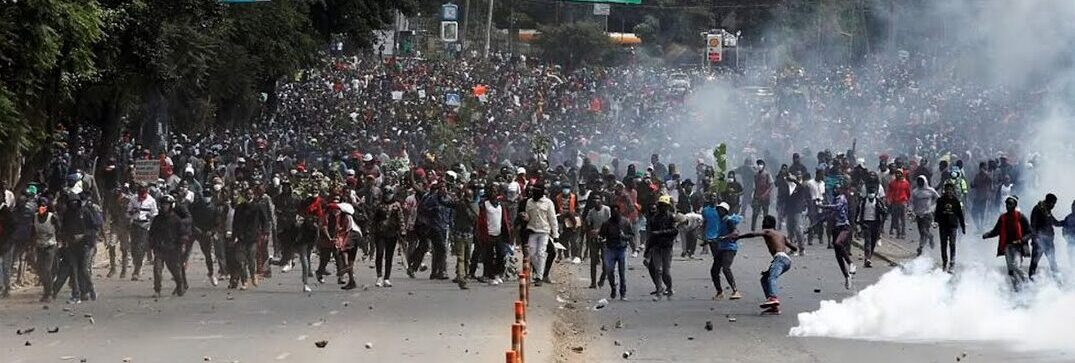* Dangote targets crude oil from OMLs 71, 72, in Q1 2025 to feed refinery
Ejiofor Alike
The Nigerian Upstream Regulatory Commission (NUPRC) has stated that the entry fees and bonuses for Nigeria’s seven deep offshore assets and 24 acreages are globally competitive.
This is just as the Dangote Group is targeting to supplement its crude feedstock for its refinery with crude oil from its two Nigerian oil assets – Oil Mining Leases (OMLs) 71 and 72- in the first quarter of 2025, after encountering initial crude oil supply challenges from the International Oil Companies (IOCs).
The NUPRC said the entry fees and bonuses for its seven deep offshore assets and 24 acreages are globally competitive.
Speaking at an investors’ call during the Africa Oil Week Conference in Cape Town, South Africa, which ended at the weekend, NUPRC’s Chief Executive, Mr. Gbenga Komolafe, announced several oil and gas investment opportunities in Nigeria, saying that the 2024 licensing round would be a game changer for the country.
To harness Nigeria’s 209.26 trillion cubic feet (TCF) of natural gas reserves and 37.5 billion barrels of crude oil reserves in other to create prosperity for Nigerians, the NUPRC boss said the licensing round features more than 31 oil blocks, supported by a strong regulatory framework under the Petroleum Industry Act (PIA).
Komolafe said: “31 blocks will be available, including seven deep offshore assets from the ongoing mini-bid round and 24 acreages for bidding this year.
“These blocks are spread across key terrains such as the continental shelf and the Niger Delta, with notable offerings such as PPL 300-CS and PPL 301-CS in the Benin Basin, as well as various Niger Delta deep-water assets like PPL 3017, which already have existing discoveries.”
According to The Whistler, Komolafe explained that the licensing round offers entry fees and bonuses that are competitive compared to other countries that are competing for investors.
He said: “For example, signature bonuses for blocks in the Middle East and North Africa can reach $10million, while Southeast Asia’s signature bonuses typically range from $1million to $3million.
“Nigeria’s incentives and reduced front-loaded fees are expected to attract a broad range of investors.
“Nigeria’s oil and gas future is also tied to the development of key matured fields, which offer substantial opportunities for growth. These include OML 145 – Nsiko Field, OML 118 – Bonga Southwest/Aparo Field, and OML 130 – Egina South Field.”
He stated that these fields are essential to Nigeria’s long-term strategy for enhancing production capacity and maximizing reserves.
Komolafe urged investors to seize the opportunity presented by the 2024 Licensing Round and invest in Nigeria.
He added: “It offers benefits such as regulatory certainty, attractive fiscal regimes, ease of doing business and reduced entry barriers.
“We have issued a licensing round guideline and published a licensing round plan for the blocks on offer. The licensing round features several blocks selected across varied geological terrains — from the promising onshore basins to the lucrative continental shelves and the unexploited depths of our deep offshore basins.”
He explained the geographical advantages that facilitate oil and gas production and export, which include Nigeria’s population of 207 million and 853 km of coastline.
“With 49 producing companies, 251 fields in production, 2,717 Oil-producing strings, and 125 gas wells already operational, the sector is primed for expansion,” Komolafe added.
He said expanding the oil and gas sector has become easier with the Presidential Executive Orders and industry reforms.
He said, “These include Executive Order No. 40, which provides a range of tax incentives, exemptions, and remissions to encourage investments, particularly in deep-water oil and gas projects, and Executive Order No. 41, which focuses on strengthening local content compliance while ensuring that the Nigerian Oil and Gas Industry Content Development Act of 2010 is balanced to attract foreign direct investment without hindering development.
“Executive Order No. 42, which aims to reduce contracting costs and streamline timelines, making it easier for investors to enter and operate in the Nigerian market.”
Dangote Targets Crude Oil from OMLs 71, 72, in Q1 2025 to Feed Refinery
Meanwhile, Dangote Group is targeting to supplement its crude feedstock for its refinery with crude oil from its two Nigerian oil assets –OMLs 71 and 72- in the first quarter of 2025.
The company holds an 85 per cent stake in West African E&P Venture, which in turn has a 45 per cent working interest in the two assets, alongside the state-owned Nigerian National Petroleum Company (NNPC) Limited, which owns 55 per cent.
S&P Global Commodity Insights reported that Dangote was seeking a floating production, storage, and offloading (FPSO) vessel for its planned oil production.
The FPSO will produce and store crude oil for the enhancement of the 650,000 barrels per day capacity refinery’s operations.
A source at the Dangote Group told THISDAY that the company targets the first quarter of 2025 for the commencement of crude oil production in the two oil blocks.
The other stakeholder in West African E&P is Nigerian upstream player, First E&P, which operates OMLs 71 and 72.
The leases, which contain the Kalaekule and Koronama oilfields, are shallow water assets located in the south-east of the Niger Delta, about 22 kilometres from the onshore Bonny terminal.
Discoveries were first made on the blocks in 1966, and Shell began production there two decades later.
Crude oil output peaked at 21,000 bpd in 1999, before declining in 2003.
Global Commodity Insights reported that the fields hold recoverable resources of almost 300 million barrels of oil and 2.3 trillion Cubic Feet (Tcf) of natural gas, adding that production could start in 2026, reaching 43,000 barrels of oil equivalent per day (boe/d) by 2036.
Discover more from HOT SOURCE NEWS
Subscribe to get the latest posts sent to your email.
